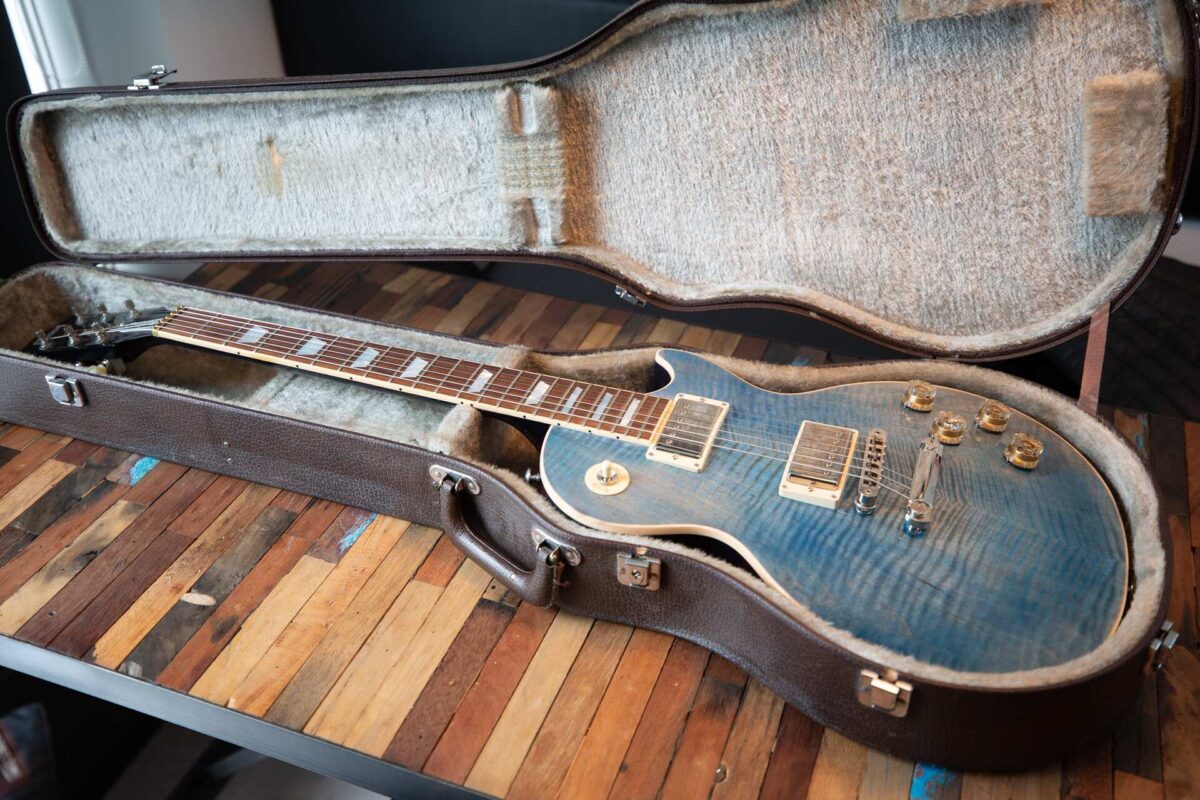When it comes to shipping musical instruments, ensuring their safety is paramount. This comprehensive guide provides essential steps and expert advice for those looking to transport their prized possessions without a hitch. Dive in to learn the best practices and proven methods to give the instrument the care it deserves during transit.


So, what is important when it comes to shipping musical instruments? Several critical factors play into ensuring their safety. Foremost is the packaging – robust cases or containers designed for the specific instrument type are essential. Proper internal padding, like bubble wrap or foam, can prevent any movement or shock damage. Equally crucial is choosing a reputable shipping service familiar with handling delicate items. On top of this, when storing these pieces, climate control is vital, as temperature or humidity fluctuations can harm them. Lastly, ensuring the instrument provides peace of mind, covering any unforeseen accidents or damages.
Why Proper Shipping of Musical Instruments is Crucial
Musical instruments are not just objects; for many, they carry profound sentimental value, representing cherished memories, achievements, or even familial legacies. When individuals move to another country, ensuring the safety of these items becomes paramount.
Improper shipping can drastically affect an instrument’s performance, compromising its sound quality and overall integrity. A dent, misalignment, or any structural damage, no matter how minor it might seem, can alter its tuning and playability.
Additionally, in 2021, the average price for a stringed school instrument in the US hit 400 dollars, as reported by Statista. Coupled with maintenance costs, these instruments represent a substantial investment. Damage from improper shipping amplifies the financial loss, a setback one would want to sidestep. Therefore, proper shipping of musical instruments is nothing short of crucial.
So, go through the relocation checklist, and in case packing a violin, guitar, flute, or drums is included, follow our guide on how to handle them during this transition.
Preparing for Shipment – Essentials You’ll Need
Shipping a musical instrument, especially when moving internationally, demands meticulous attention to detail and the right packing materials. The delicate nature of instruments requires protection against potential shocks, temperature fluctuations, and other potential hazards during transit. Here’s a list of essential items you’ll need:
- Specialized cases,
- High-quality bubble wrap,
- Dense foam inserts.
The Right Case for the Right Instrument
Selecting the appropriate case is more than just a matter of fit; it’s about ensuring the instrument can be efficiently relocated without risks. One of the most common relocation mistakes is using a generic or ill-fitted case, which can leave your items vulnerable to damage.
A hard case, tailored specifically for the instrument it houses, offers the best protection. It not only fits the instrument snugly, minimizing movement inside but also provides a sturdy exterior shield against external pressures and impacts.


Additional Protective Measures
While a custom-fit case is essential, there are moments, especially during a last-minute relocation rush, where additional protective steps can make the difference between an instrument arriving in pristine condition or suffering damage.
To move safely, it’s advisable to use supplementary padding materials, such as bubble wrap, foam inserts, or even specialized padding designed for musical instruments. These provide an extra layer of cushion, absorbing shocks and ensuring that the instrument remains unharmed, even if faced with unexpected jolts during transit.
Step-by-Step Guide to Packing Different Types of Instruments
Packing these pieces for relocation is not a one-size-fits-all affair. Various instrument categories – be it string, wind, percussion, or keyboard – demand specialized packing approaches. This differentiation arises because each instrument has unique sensitivities and vulnerabilities.
While some might fret over the anxiety about relocating their precious items, understanding how to pack efficiently for each type can mitigate such concerns. In the upcoming sections, we’ll delve into the intricacies of packing and ensuring their safety during transit.
The easiest way to pack a string instrument is to use a hard case specifically designed for its type. Before placing it in the case, it’s recommended to loosen the strings.
This act prevents tension that could result in damage during transit. For an added layer of protection, wrap the instrument in bubble wrap. To ensure no movement within the case, fill any gaps or spaces with foam.
Flutes and trumpets often come in multiple parts. If possible, dismantle everything into its primary components. To protect against scratching or other damages, wrap each piece individually in a soft cloth. Once wrapped, place the parts in the original case, which is usually tailored to the instrument.
To organize packing to move more efficiently and safely, any remaining space within the case should be filled with bubble wrap, preventing the instrument’s parts from jostling during transit. As with any instrument, flutes, saxophones, and trumpets can be quite an investment, so their delicate nature means damage can be expensive to repair.
As we discuss packing for a move, one of the instruments that people struggle with the most is percussion pieces like drums. This process requires a few specific steps. Begin by dismantling the drums, removing the heads, and separating any other components. Many drums come with specialized bags or cases; using these original containers ensures optimal protection. After placing each piece inside, wrapping individual components in bubble wrap adds an extra layer of safety.
Keyboards, especially larger ones like pianos, can be challenging to move. For those moving out for the first time, it might be wise to choose and hire an international moving company to assist with the relocation.
Regardless of the instrument’s size, wrapping it in thick pads or blankets is essential to prevent potential scratches or external damage. Are you relocating pianos? Remember to lock the keyboard lid, ensuring it doesn’t open during transit. Smaller keyboards can be placed in specialized hard cases for added protection.
Options for Shipping Musical Instruments and What to Consider
It’s essential to weigh the pros and cons of different relocation methods. Two of the most commonly used options are sea and air. Sea shipping is typically slower but can be more cost-effective for larger consignments, while air shipping is faster but can be more expensive.
For those unsure about handling the intricacies of transporting such delicate items, hiring professional movers and investing in moving services can be invaluable. These professionals are adept at handling musical instruments and understand the nuances involved.
It’s wise to consult with the overseas shipping company about every aspect of the shipment, including the best methods, packaging materials, potential risks, and whether the safest option is to invest in custom crating.
Insurance is a Must-Have When Relocating Internationally
Transporting instruments, especially during transitions to a new home, can have inherent risks. While most relocation specialists offer basic coverage, it’s wise to delve deeper and explore enhanced insurance options. Such comprehensive policies can shield the full value of your pieces against unexpected damages or misplacements.
Alongside this, don’t hesitate to ask movers about any supplementary offerings that might elevate the protection of the equipment.
Cost Considerations Can’t Be Ignored
Formulating a budget for transporting musical equipment requires an understanding of various cost-impacting elements. Factors can span the chosen freight method (air vs. sea), the dimensions and heft of the gear, value-added services (like expert packing or superior insurance), and the end destination.
A savvy strategy for cost reduction is adjusting the relocation timeline. For instance, winter often emerges as the most economical period for such ventures, owing to reduced demand.


Common Pitfalls and How to Avoid Them
When moving abroad, many individuals inadvertently commit preventable errors. These missteps, while common, can lead to damage or even loss of valuable items. This section provides a glimpse into the most frequent pitfalls and offers guidance on sidestepping them, ensuring the prized possession reaches its destination intact.
Failing to Properly Seal the Case
One of the cardinal mistakes when preparing belongings for transport is neglecting to ensure that the case is adequately sealed and secured. Given the delicate nature of many instruments, even minor jostling can lead to irreversible damage.
Before sending off all items, it’s imperative to double-check the seals, locks, and closures of the case. Employing additional security measures like tapes or bands can also be beneficial. Remember, every detail matters, so including this step in a moving to-do list can make all the difference.


Hiring Scammers Instead of Legitimate Movers
Not researching and carefully selecting a relocation company can bring about dire consequences. According to the Better Business Bureau, customers reported losses exceeding $129,040 to moving scams as per the BBB Scam Tracker in 2022 alone.
To avoid falling victim to such schemes, always conduct thorough research on potential movers. Platforms like Yelp and Google My Business provide invaluable insights through user reviews. Furthermore, checking a company’s standing with the Better Business Bureau can offer additional peace of mind, affirming its legitimacy and professionalism.
Watch the following video for additional information on how to deal with and recognize scammers.
Hiring Reliable Movers Will Make the Relocation Process Easier and Safer
Reliable movers come equipped with expertise, ensuring that every piece of your collection, from the smallest flute to the grandest piano, is handled with the utmost care. Also, these movers often offer partial and full packing services, ensuring that each instrument is cocooned in protective materials.
For those with broader moving needs, many top-tier relocation firms even provide overseas vehicle shipping, allowing for a comprehensive moving experience. In essence, you avoid moving stress, paving the way for a smooth and seamless transition to the new destination.
Leave Your Cherished Musical Instruments in the Hands of Our Capable Team
Cherished instruments deserve nothing short of the best care during this pivotal transition. At Sunset International Shipping, we comprehend the nuances and significance of these prized possessions. As a seasoned overseas moving company, we have honed our skills to ensure that every instrument receives the dedicated and expert care it deserves. Allow us to shoulder the responsibility, turning potential moving stress into a seamless, worry-free experience. So, contact us and explore how our team can make your move both easier and safer.
FAQ
The safest method to ship your prized possession involves using specialized cases, ample padding, and opting for carriers with experience in transporting delicate items. Select a carrier based on its reputation, customer reviews, and expertise in shipping overseas. Also, custom packaging is highly recommended to ensure optimal protection during transit.
Acquiring insurance is crucial when transporting valuable items to safeguard against potential damages or loss.
While it’s possible to send multiple items together, ensure each one is individually protected and well separated within a larger container.
If your item arrives with damages, immediately document the condition, notify the overseas shipping company, and initiate a claim process.
To estimate relocation costs, factor in the item’s dimensions, weight, destination, and any additional services or insurance you opt for.











